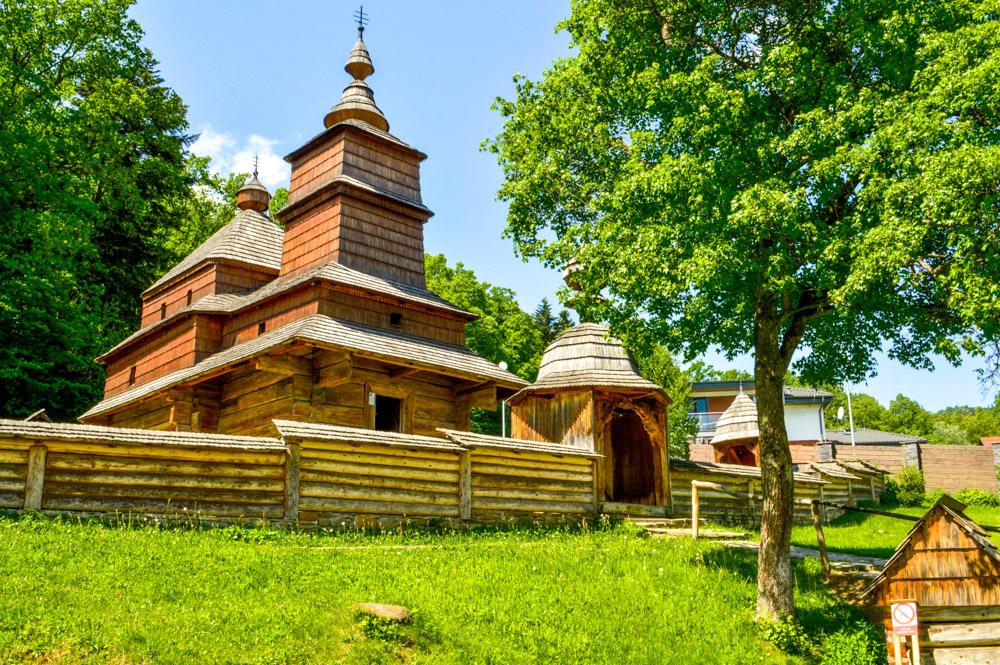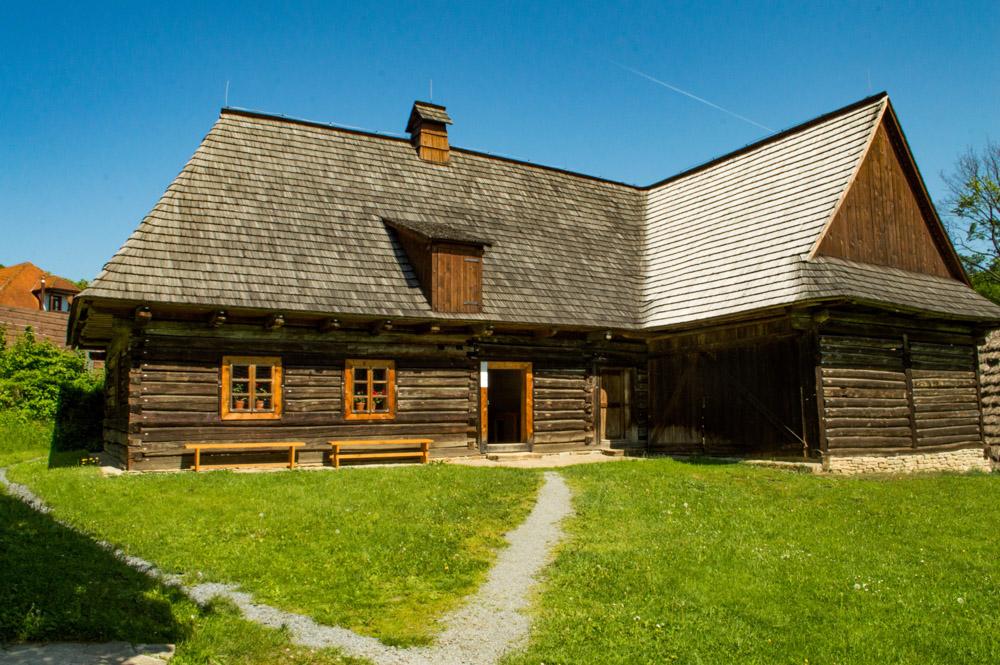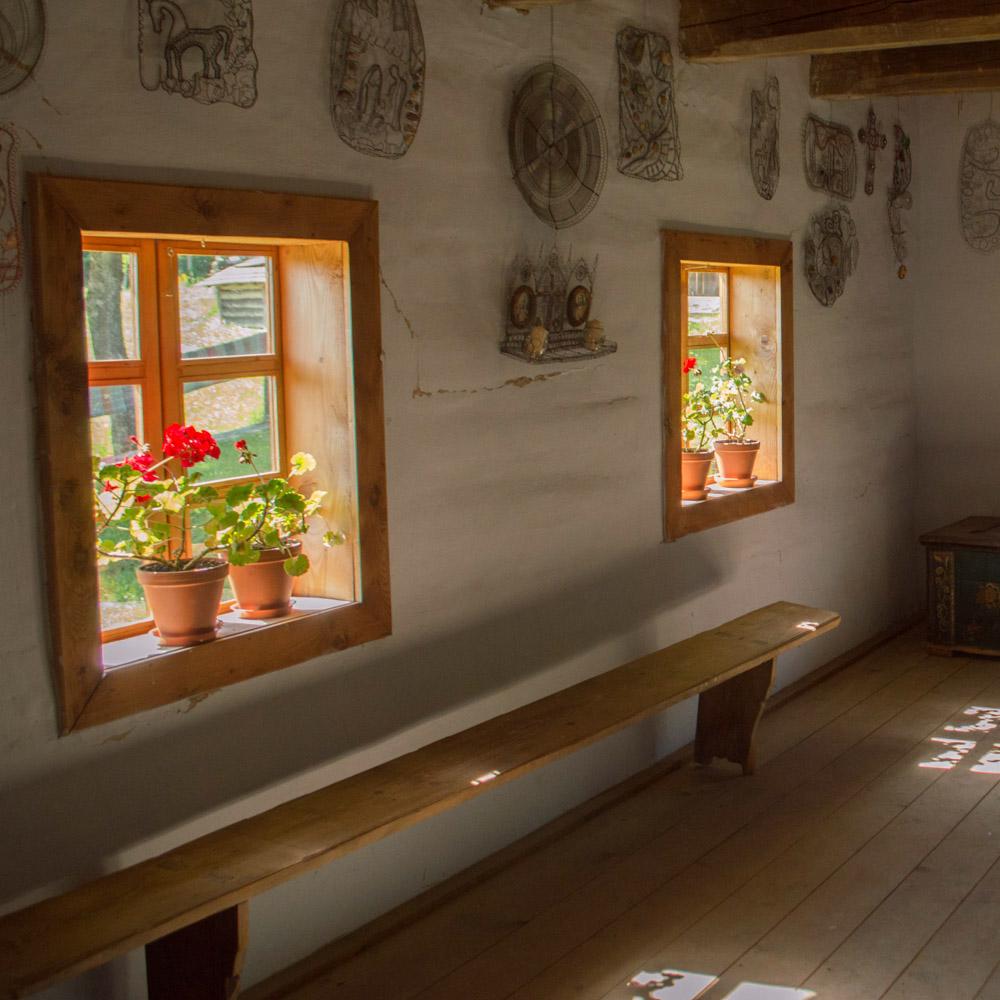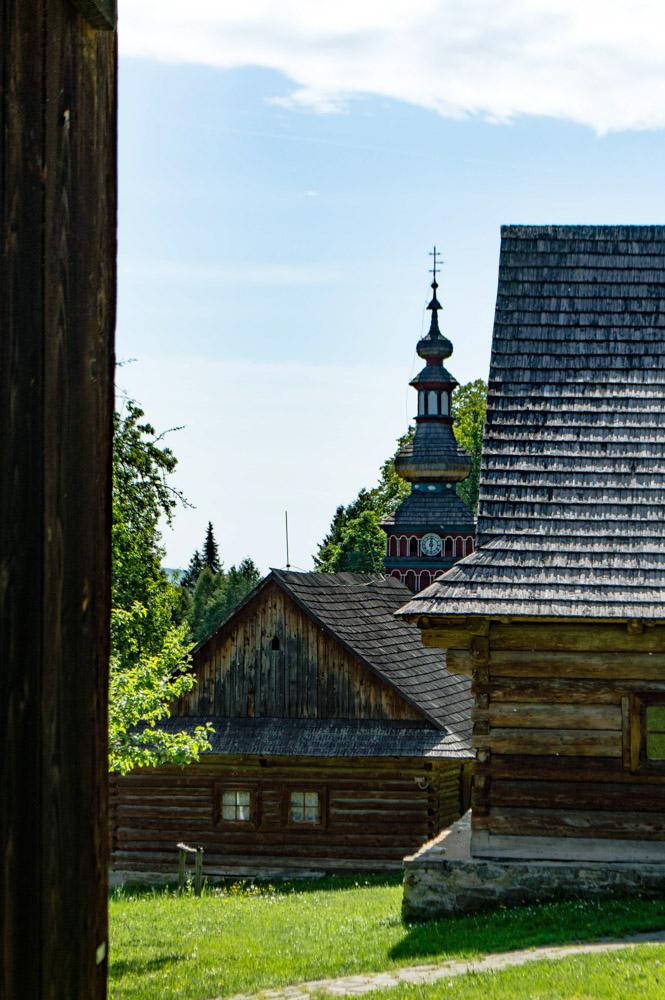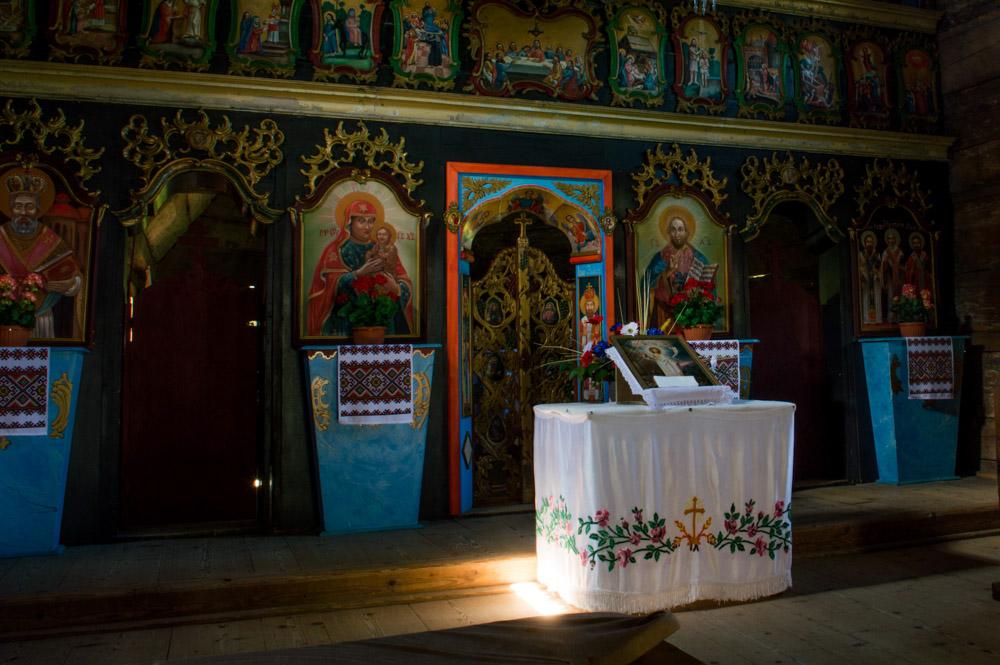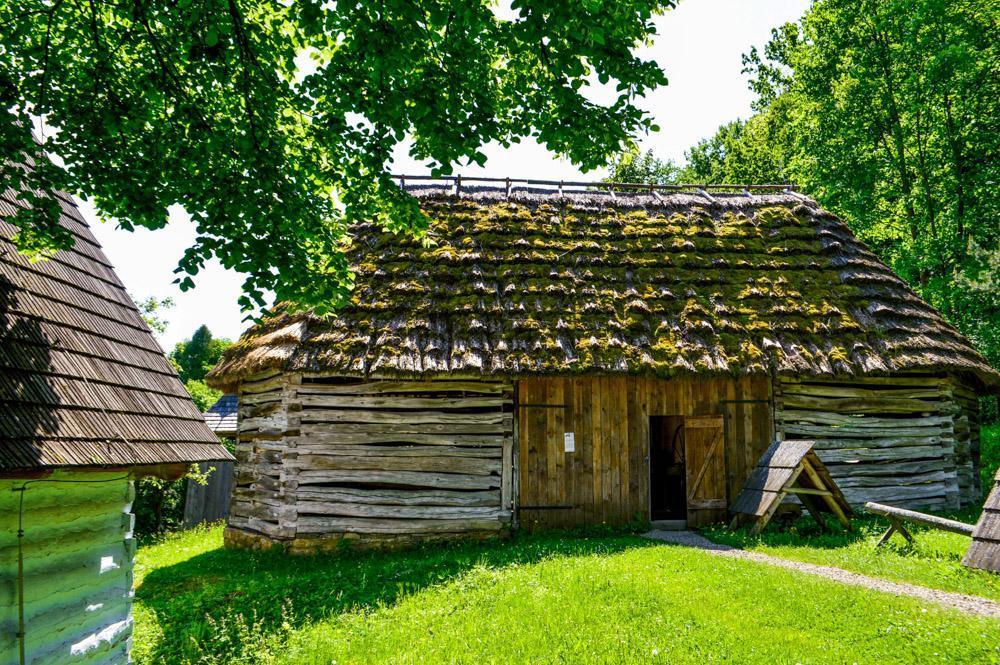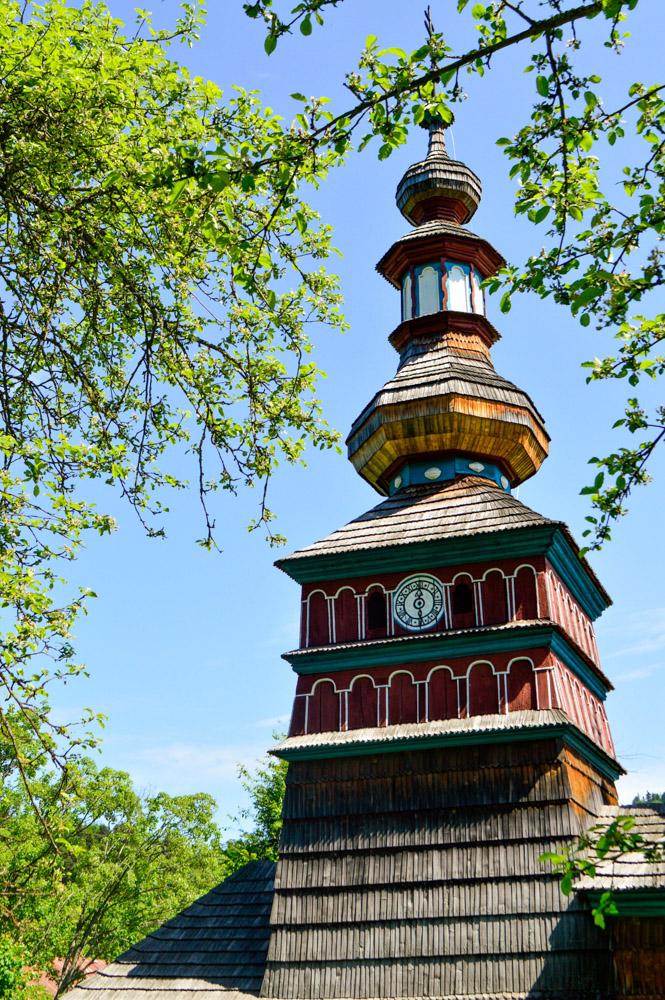I have discussed the villages of Vlkolinec and Pribylina in prior posts, but it is worthwhile to compare Bardejovské Kúpele to the city from which it gets its name (which I discussed in the previous post) and the historic divide that existed in Slovakia between urban lifestyles and demographics and that of villages.
The skanzen (open-air museum) in the resort of Bardejovské Kúpele is charming in its examples of traditional folk architecture. Structures from around the Šariš region show off the building traditions of pre-industrial Slovakia, as well as details about how people lived within them. The structures within Bardejovské Kúpele are true examples of original Slovak construction. The nearby city of Bardejov, however, is not—at least, not entirely.
Slovak land was for 1000 years controlled by Hungary. The Hungarians suppressed Slovak culture, allowing them to continue farming in their country villages however they wished, but forcing them to adopt the Hungarian language and ideals if they wanted to join the educated community. Urban areas were dominated by the reigning Hungarian aristocracy and a large Jewish population that formed the backbone of literacy in the region. This divide between educated cities and the rural Slovak farmers was only furthered when the Hungarians invited German craftspeople to move into the northern regions of Slovakia.
Cities were primarily populated by Hungarians, Germans and Jews while ethnic Slovaks labored in the fields outside the cities. It is amazing that, while retaining a cultural connection to their land, Slovaks were essentially a minority for hundreds of years. The effects of this are still clear today, as most Slovak cities, like Bardejov and my own town of Poprad, exhibit predominately German architecture and many Slovaks have foreign surnames.
Skanzens like the one in Bardejovské Kúpele are valuable because they demonstrate the complexity and beauty of the height of Slovak architecture—architecture which never got the chance to flourish on a large scale.
Signed,
Andrew
